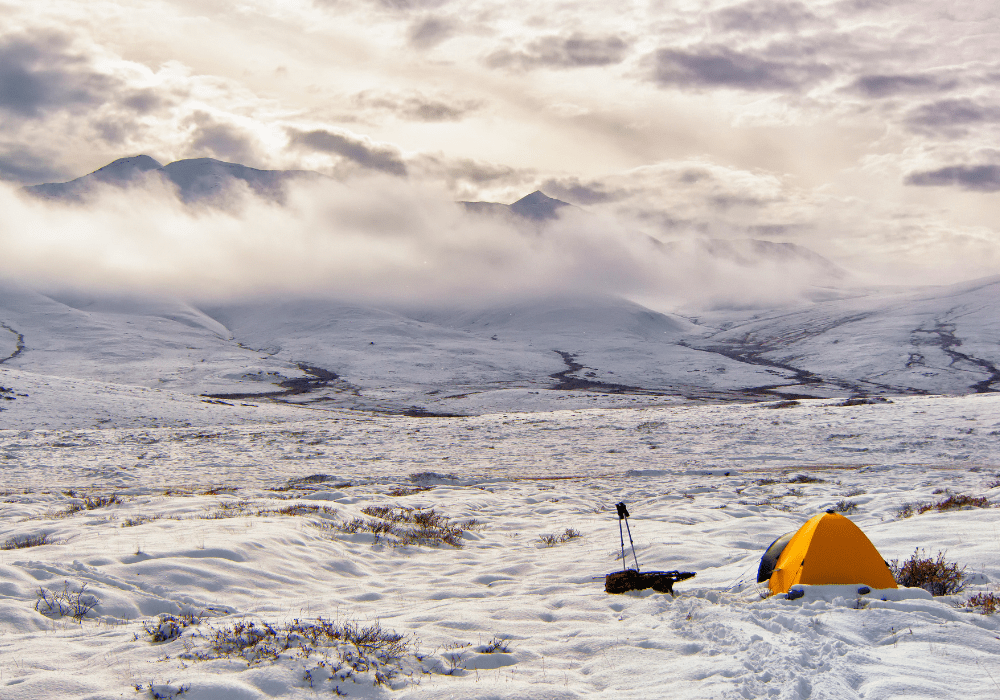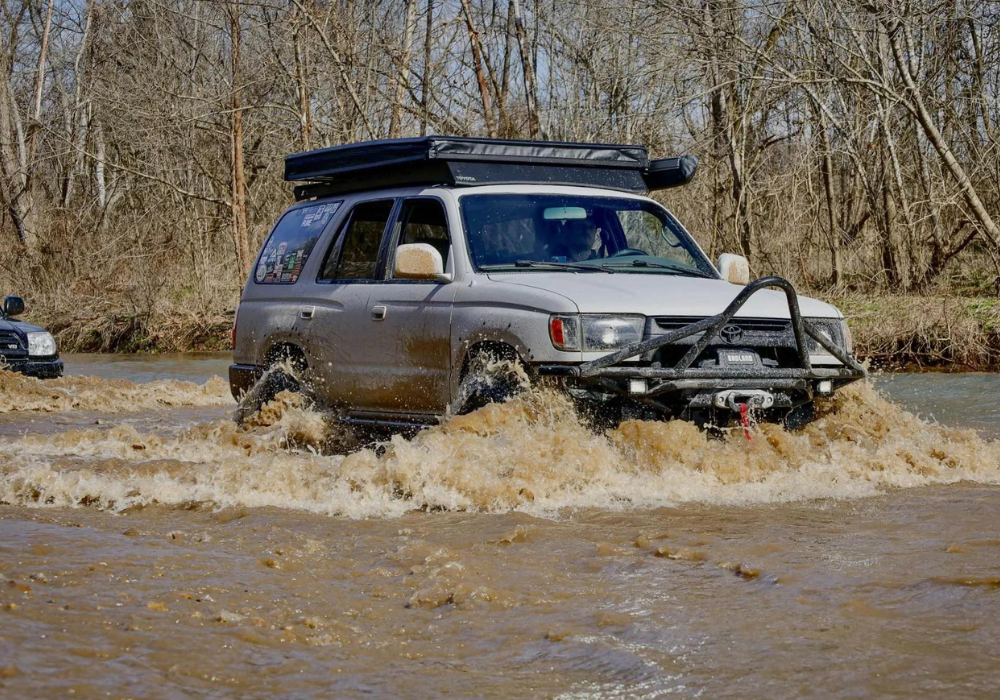
10 Best Places To Hunt in Nunavut
Nunavut is Canada’s largest and northernmost territory. Once part of the Northwest Territories until April 1, 1999, it is now under the independent government of the Inuit.
With the territory having some of the most sought-after exotic big game in the world, it’s no surprise that big hunting is part of Nunavut’s tourism industry. This land sports a healthy population of wolves, abundant barren-ground caribou, sustainably harvested walrus, and herds of muskoxen. You may even get the chance to hunt extremely dangerous polar bears – the largest land predator in the world.
While visitors are allowed to hunt in Nunavut, you are required by law to use licensed outfitters. You must also have the mandatory hunting licenses and tags before starting your hunt. Nunavut Wildlife Officers strictly enforce hunting seasons and quotas.
Unfortunately, as of writing this article (4th of April 2022), only Nunavut residents and critical workers (under strict guidelines) are allowed to travel to Nunavut. For more information, check out the Nunavut government’s official FAQ-Travel page
Table of Contents
Once in a Lifetime Hunting in Nunavut
If the thought of hunting in this extreme land is getting you excited, then this article is for you. Here you’ll find the best places to hunt in Nunavut plus information on what game animals you can hunt and who you can approach for hunting opportunities.
1. Baralzon Lake: Caribou, Muskox, Grizzly, and MoreB
Baralzon Lake is located on the Nunavut-Manitoba border. The area around the lake is rolling and hummocky with varied landforms and water bodies.
Summers in the area are a bit cool with average temperatures going up to just 64 °F in July. Winters, however, are harsh with average temperatures descending to -34.6 °F in January.
If you’re looking to hunt in Baralzon Lake, you can contact Henik Lake Adventures. This company offers fully guided hunts for barren-ground caribou, grizzly, muskox, wolf, walrus, polar bear, and wolverine.
2. Edehon Lake: Caribou
Edehon Lake is a lake in Nunavut located approximately 40 miles northeast of Baralzon Lake. The lake contains many major migratory routes for game animals such as caribou.
Being closely situated to Baralzon, Edehon shares much of the same climate: cool summers and harsh winters.
The Lodge at Little Duck is the main outfitter in the area and has several caribou camps set up. They offer caribou hunts using rifle, bow, or muzzleloader. This company is also partnered with Henik Lake Adventures.
3. Resolute: Muskox, Caribou, Walrus, and More
Resolute, or Resolute Bay, is an Inuit hamlet on Cornwallis Island, Nunavut. It’s Canada’s second northernmost community next to Grise Fiord in Ellesmere Island.
Being so far up north, it’s no surprise that Resolute has a polar arctic climate. This means long cold winters with short cool summers. The area’s average high temperature is 9.1 °F while the average low is -1.5 °F.
Worldwide Trophy Adventures is the longest operating outfitter in Nunavut. This company offers guided hunts for polar bear, Greenland and barren-ground muskox, Central Canada barren-ground and Arctic Islands Caribou, barren-ground Grizzly, and Atlantic Walrus.
4. Naujaat: Polar Bear, Walrus, Caribou
Naujaat, formerly known as Repulse Bay, is an Inuit hamlet on the shores of Hudson Bay right in the Arctic Circle. The area surrounding this hamlet consists of rolling tundra with mudflats, cliffs, and eskers.
Summers in the hamlet are mild with average temperatures going up to 77 °F. However, winters can be brutally harsh with average temperatures dropping to -49 °F. Snowfall can happen any time in spring, fall, and winter.
If you’d like to experience hunting in this awe-inspiring wilderness, feel free to contact Arctic Wilderness Outfitter. This company offers accommodations and guided hunts for polar bear, walrus, and caribou.
5. Cambridge Bay: Muskox
Cambridge Bay is a hamlet located on the southeast coast of Victoria Island in the Kitikmeot region. This hamlet sits among numerous lakes and ponds atop an extensive rolling plateau that gradually rises from the steeper coastal cliffs.
Summer brings sparse rainfall in the area when temperatures can rise to 77 °F. Fall brings rampant snowfall and December sees no sunlight. Winter temperatures can go down to -31 °F.
Hakongak Outfitting seems to be the only licensed outfitter operating in the area. Unfortunately, this company doesn’t seem to have an official website just yet, although, from what we can gather from their Facebook page, they do offer several activities in the area including guided muskox hunts.
6. Sanikiluaq: Seal, Walrus, and Polar Bear
Sanikiluaq is a municipality and Inuit community and is Nunavut’s southernmost community located on Flaherty Island’s (part of Belcher Islands) north coast. The municipality is made up of numerous rocky cliffs that tower up to 509 feet high.
The weather in this area is variable with mostly sunny days interspersed with foggy ones, with the occasional windy storms. Summer temperatures can go up to 77 °F while winter temperatures can drop down to -22 °F.
You can contact Sanikiluaq Outfitters for hunting opportunities in this area. This company offers hunting expeditions for ringed, harbor, and bearded seals as well as for polar bears, walruses, and muskoxen.
7. Kitikmeot: Polar Bear, Muskox, Caribou, and More
Is an administrative region of Nunavut, Canada. It covers an area of about 171,000 square miles and includes several hamlets and communities.
Summers temperatures in the region can reach up to 86 °F while winter temperatures can drop down to -40 °F. Winters in the region are usually cold and windy.
Huntable game species in the Kitikmeot region include polar bears, muskoxen, barren-ground caribou, and grizzlies as well as walruses. You can contact Canada North Outfitting for guided hunts involving the above-mentioned animals.
8. Igloolik: Walrus
Igloolik is an Inuit hamlet on the small island of Foxe Basin, in the Qikiqtaaluk Region in Nunavut. Its area consists of mostly flat terrain.
July marks the start of Igloolik’s warmer months when temperatures can go as high as 59 °F. Winter months can see temperatures hover around -22 °F and even drop down to -58 °F.
In this frigid part of Nunavut, the main game to hunt is walrus. Igloo Tourism and Outfitting offers walrus sport hunting, together with other tourism-related activities.
9. Pond Inlet: Caribou, Seal, Narwhal, and Polar Bear
Pond Inlet, a.k.a Mittimatalik, is a picturesque hamlet on the northern tip of Baffin Island. This hamlet is surrounded by mountain ranges, several glaciers, fiords, inlets, ice caves, hoodoos, and icebergs.
Summertime temperatures in Pond Inlet can go up to 59 °F. The hamlet is protected by mountains from winds, rain, and snow in the fall. Winter temperatures can drop down to -40 °F.
Barren-ground caribou, ringed seals, narwhals, and polar bears are the main game animals in Mittimatalik. Nunavut Outfitters Inc offers hunting opportunities in this area, however, they don’t seem to have a website and so we are unsure what animals they include as part of their hunter outfitting service.
10. Victoria Island: Muskox
Victoria Island is a large island straddling the boundary between Nunavut and Canada’s Northern Territories. It’s the 8th largest island in the world and its 83,897 square-mile area consists of peninsulas, heavily indented coastlines, and numerous inlets.
Summers on the island are still chilly with temperatures going up to just around 50 °F. As you’d expect from islands in the coldest part of the world, winters are harsh with temperatures dropping down to -40 °F.
While many animals inhabit this extreme place, the main game animal is the muskox. High Arctic Lodge offers guided muskox hunts as well as accommodations in their modern lodge.




